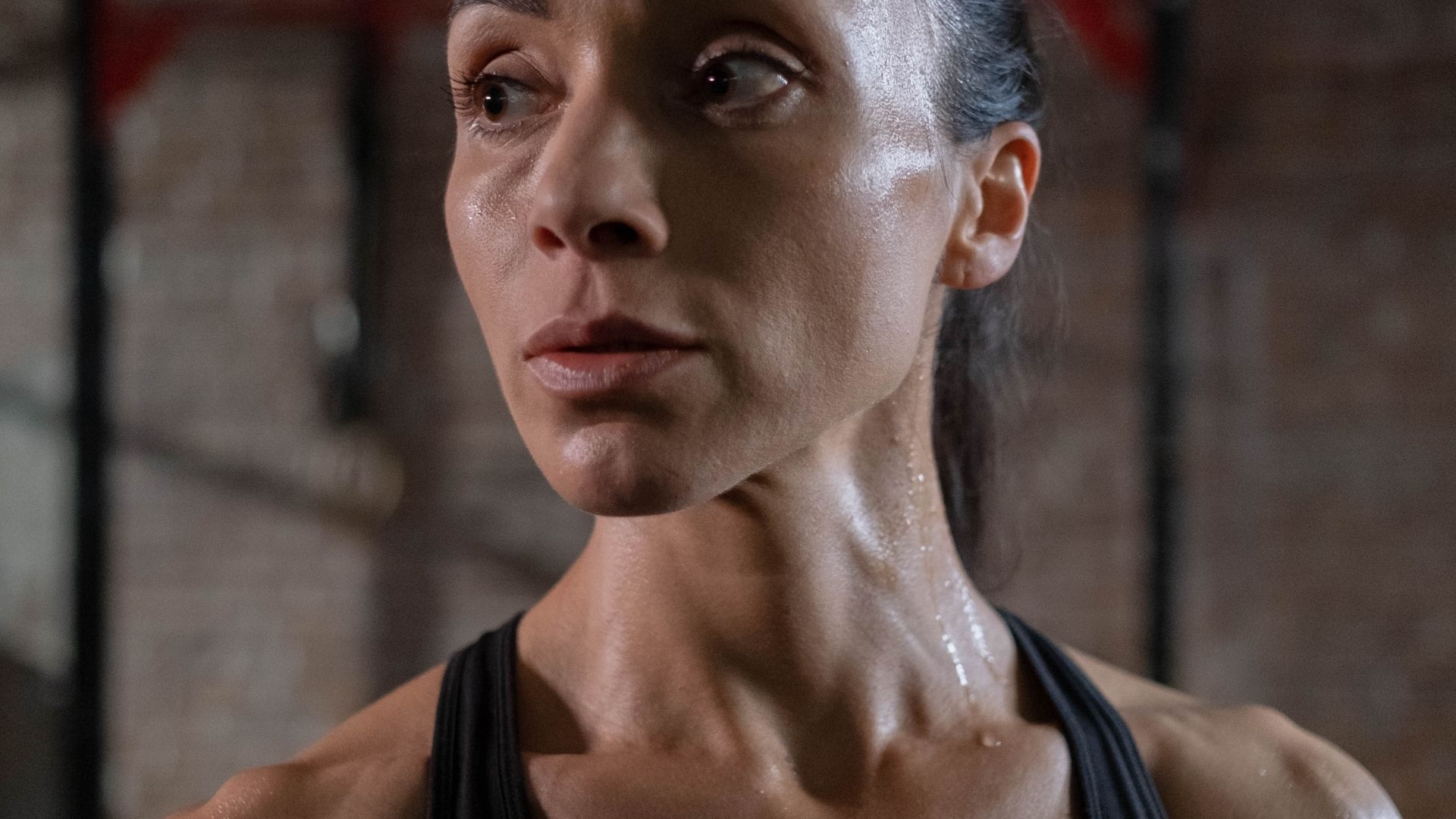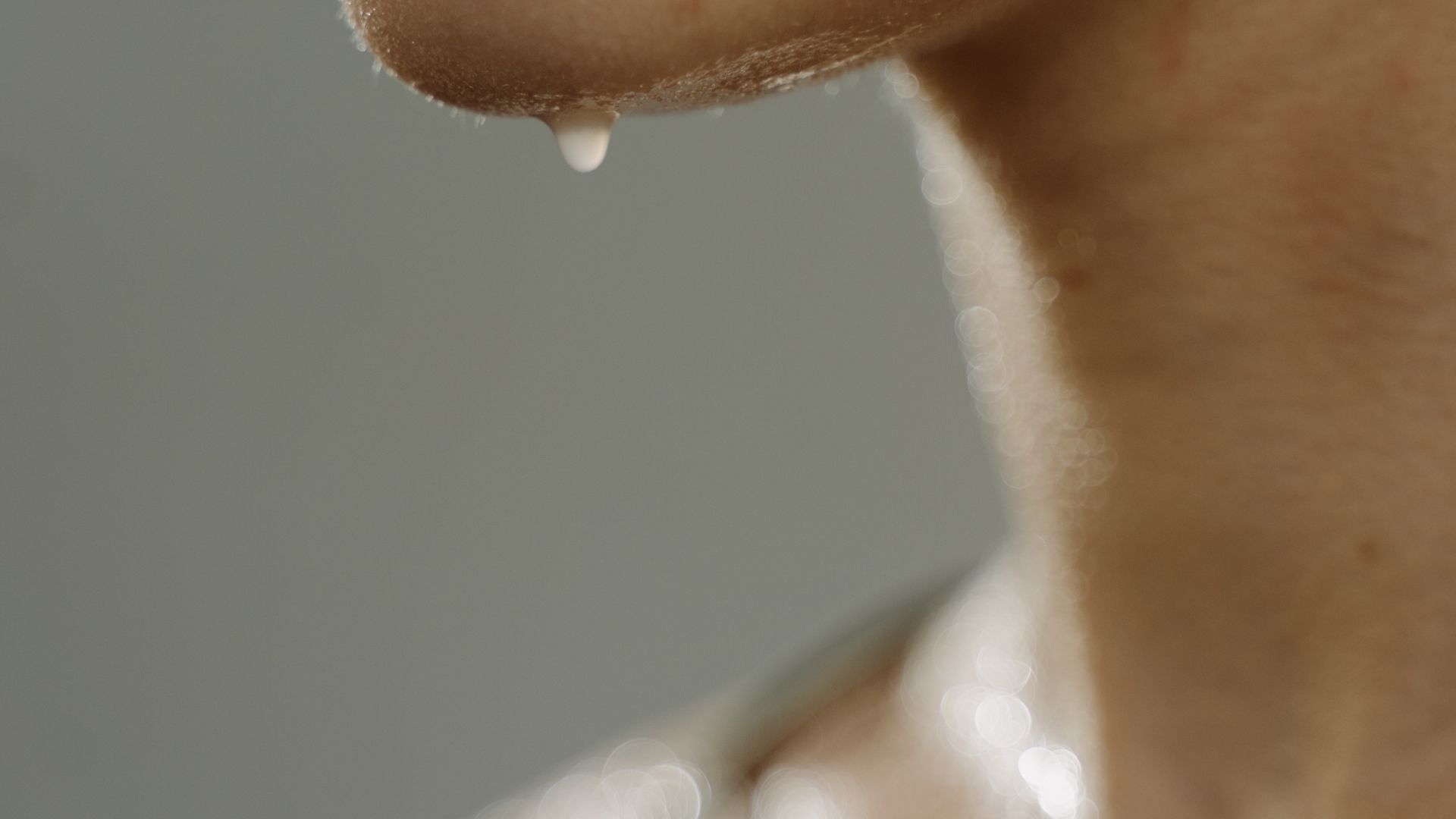Squats are a popular exercise known for their ability to target multiple muscle groups, especially the lower body. Many people have experienced sweating profusely during or after performing squats.
In this article, we will explore the reasons behind why squats make you sweat so much and how it relates to the benefits of this exercise. So, let’s dive in and uncover the science behind the sweat!
Squats cause you to sweat because they engage large muscle groups, such as the quadriceps, hamstrings, and glutes. These muscles generate heat when they contract and work hard. Sweating is your body’s way of regulating temperature and cooling down. As you perform squats, your body increases its energy expenditure, leading to an increase in metabolic activity and heat production, resulting in sweating to maintain a stable body temperature.
Your body increases its energy expenditure.
Squats can be an intense exercise that engages multiple large muscle groups in your body, such as the quadriceps, hamstrings, and glutes.
When you perform squats, these muscles contract and work hard to generate force and support your movements.
This intense muscular activity leads to an increase in metabolic activity and heat production, which can trigger sweating as your body’s way of regulating temperature and cooling down.
To understand why squats make you sweat, let’s delve deeper into the physiological mechanisms at play. When you exercise, your muscles require energy to contract and perform the desired movements.
This energy is primarily derived from adenosine triphosphate (ATP), the body’s main energy currency. The breakdown of ATP releases energy that powers muscle contractions.
Large muscle involve.
During squats, the large muscle groups involved, such as the quadriceps, hamstrings, and glutes, require a substantial amount of ATP to contract forcefully.
As a result, your body’s metabolic rate increases to provide an adequate supply of ATP and fuel the ongoing muscular activity. This increased metabolic rate leads to a higher production of heat as a byproduct.
Your body has a built-in temperature regulation system to maintain a stable internal environment. One crucial component of this system is sweating. When your body senses an elevation in core temperature, it initiates a cooling response through sweat production.
The primary purpose of sweating is to dissipate heat from your body’s surface. When sweat is produced, it evaporates from your skin, taking away heat energy in the process.
This evaporation cools down your body and helps maintain an optimal temperature for efficient physiological functioning.
During squats, as your muscles contract and generate heat, your body recognizes the rise in temperature. To counterbalance this increase, your sweat glands are stimulated to produce sweat, which is mostly composed of water, salt, and small amounts of other electrolytes.
As the sweat reaches your skin’s surface, it evaporates, drawing heat away from your body and promoting cooling.

When: sweating during squats
The timing of sweating during squats can vary depending on several factors, including individual characteristics, environmental conditions, and exercise intensity.
Generally, sweating begins shortly after you start exercising, especially if the intensity is high. However, the onset of sweating can also be influenced by factors such as hydration levels, fitness level, and genetic predisposition.
Example
For example, someone who is well-hydrated may start sweating earlier than someone who is dehydrated because a hydrated body is better equipped to regulate temperature efficiently.
Additionally, individuals who are more physically fit might start sweating earlier during squats compared to those who are less fit.
Fitness level can affect how quickly the body adapts to physical exertion and initiates the cooling mechanism of sweating.
Environmental conditions also play a role in sweating. Higher ambient temperatures or increased humidity can prompt sweating to occur sooner and at a higher rate during squats.
The combination of external heat and internal heat generated by exercise can accelerate the body’s cooling response through increased sweat production.
To provide an example, imagine performing squats in a hot and humid gym environment. As you begin the exercise, your body temperature rises due to the muscular effort. In response, your sweat glands activate, and you start to sweat profusely.
The sweat beads form on your skin and soon start to trickle down your face and body. This process continues throughout the squatting session, with your body constantly producing sweat to counteract the heat generated.
It’s important to note that sweating during squats can vary from person to person. Some individuals naturally sweat more than others, which can be influenced by genetics, body composition, and other factors.
The intensity and duration of your squatting session can also impact the amount of sweat produced.
Here’s a tabular breakdown of the reasons why squats make you sweat, how it happens, when it occurs, recommended considerations, and examples:
| Reasons | How it Happens | When it Occurs | Recommended Considerations | Examples |
|---|---|---|---|---|
| Engaging large muscle groups, such as quadriceps, hamstrings, and glutes. | The intense muscular activity during squats generates heat as these muscle groups contract and work hard. | Squat-induced sweating typically begins shortly after exercise initiation, especially with higher intensities. | – Stay hydrated to support efficient temperature regulation.
– Wear breathable workout clothing to facilitate sweat evaporation. – Consider the environmental conditions, such as temperature and humidity. |
– Performing squats in a hot and humid gym environment. |
| Increased metabolic activity and heat production. | As your body increases its energy expenditure to fuel squatting, metabolic processes generate heat as a byproduct. | Sweating response occurs as your body’s cooling mechanism to dissipate heat and maintain temperature homeostasis. | – Gradually increase exercise intensity to allow your body to adapt to the demand.
– Monitor hydration levels and replenish fluids as needed. – Pay attention to signs of overheating or exhaustion. |
– Engaging in a high-intensity squatting session that raises your heart rate and body temperature. |
| Individual factors, such as genetics, fitness level, and hydration status, can influence sweating. | Genetic predisposition, fitness level, and hydration levels can impact the timing and intensity of sweat production during squats. | Sweat response may vary between individuals, with fitter individuals and those who are well-hydrated potentially initiating sweating earlier. | – Focus on maintaining overall fitness and hydration for efficient temperature regulation.
– Consider individual differences and adapt workout intensity accordingly. |
– Observing variations in sweat production between different individuals during a group squatting class. |
| Environmental conditions play a role in sweating. | Higher ambient temperatures or increased humidity can prompt sweat production during squats. | Squat-induced sweating may occur sooner and at a higher rate in hot and humid environments. | – Choose an exercise environment with appropriate temperature and ventilation.
– Modify intensity or duration of squats based on the surrounding conditions. |
– Experiencing increased sweating during squats in a hot yoga studio. |
These factors and considerations demonstrate how squats can lead to sweating and highlight the importance of monitoring one’s body, hydration levels, fitness, and environmental factors during squatting exercises.
Conclusion
In conclusion, squats make you sweat because they engage major muscle groups, such as the quadriceps, hamstrings, and glutes, which generate heat as they contract and work hard. Sweating is your body’s way of regulating temperature and cooling down.
The increase in metabolic activity and heat production during squats triggers the body’s cooling response through sweat production.
Factors such as hydration levels, fitness level, genetics, and environmental conditions can influence the timing and intensity of sweating during squats. Ultimately, sweating during squats is a normal physiological response to maintain a stable body temperature during exercise.

Hey there, it’s Mike Rrsq, the Editor-in-Chief over at Jsquat.com, and I’m absolutely obsessed with all things squat fitness! I’ve been lucky enough to get some serious recognition for my work in this field. With a solid background in the fitness and wellness industry, I’ve been there right from the get-go, helping shape this website into what it is today.
You see, I’m not just the boss around here; I’m also a passionate contributor. I love sharing my insights through my articles, and trust me, they’re not your run-of-the-mill stuff. Each piece I write is a labor of love, filled with my expertise and real-world experience in the fitness universe. So, if you’re into fitness and looking for some inspiration, you’re in the right place!

